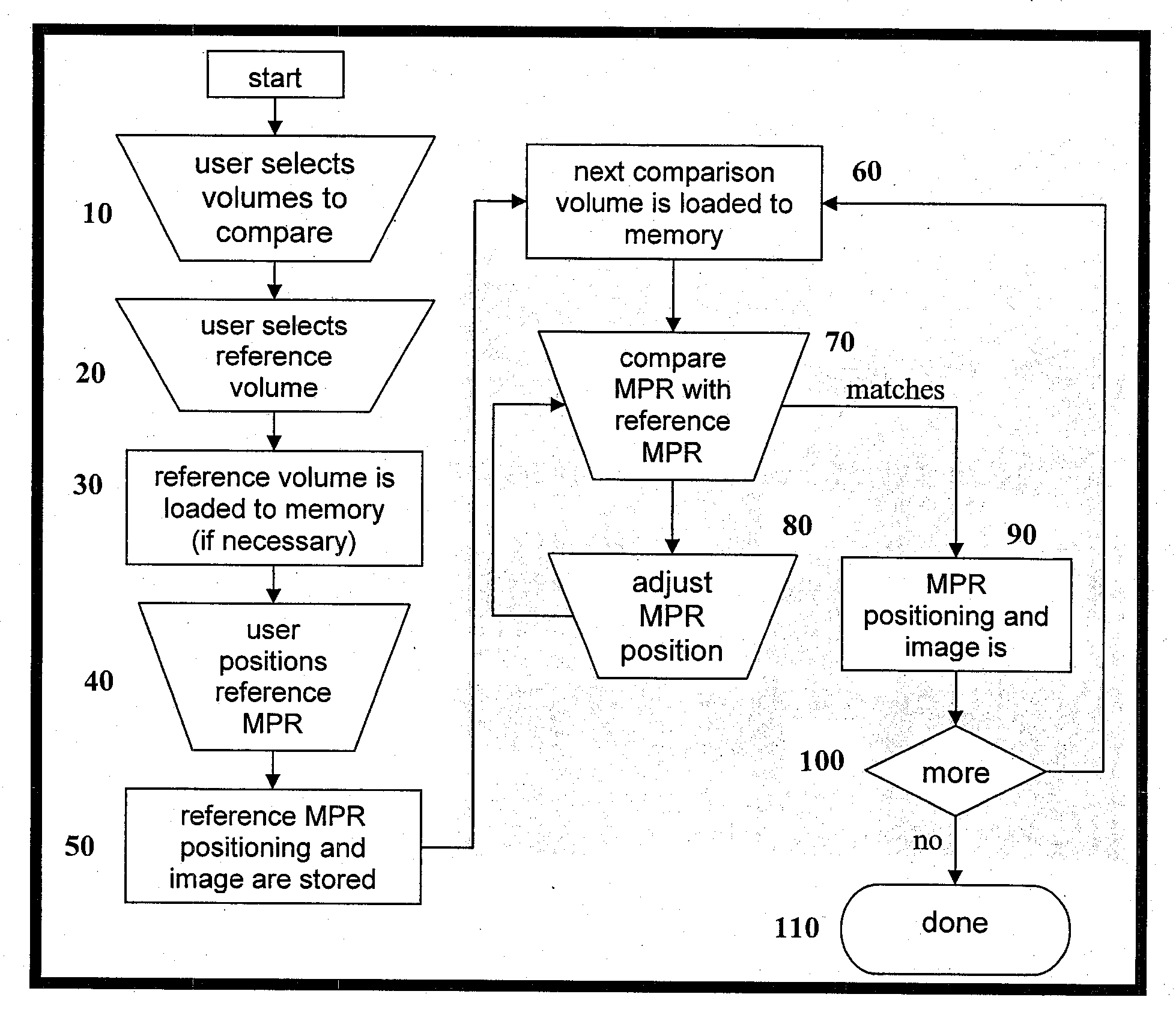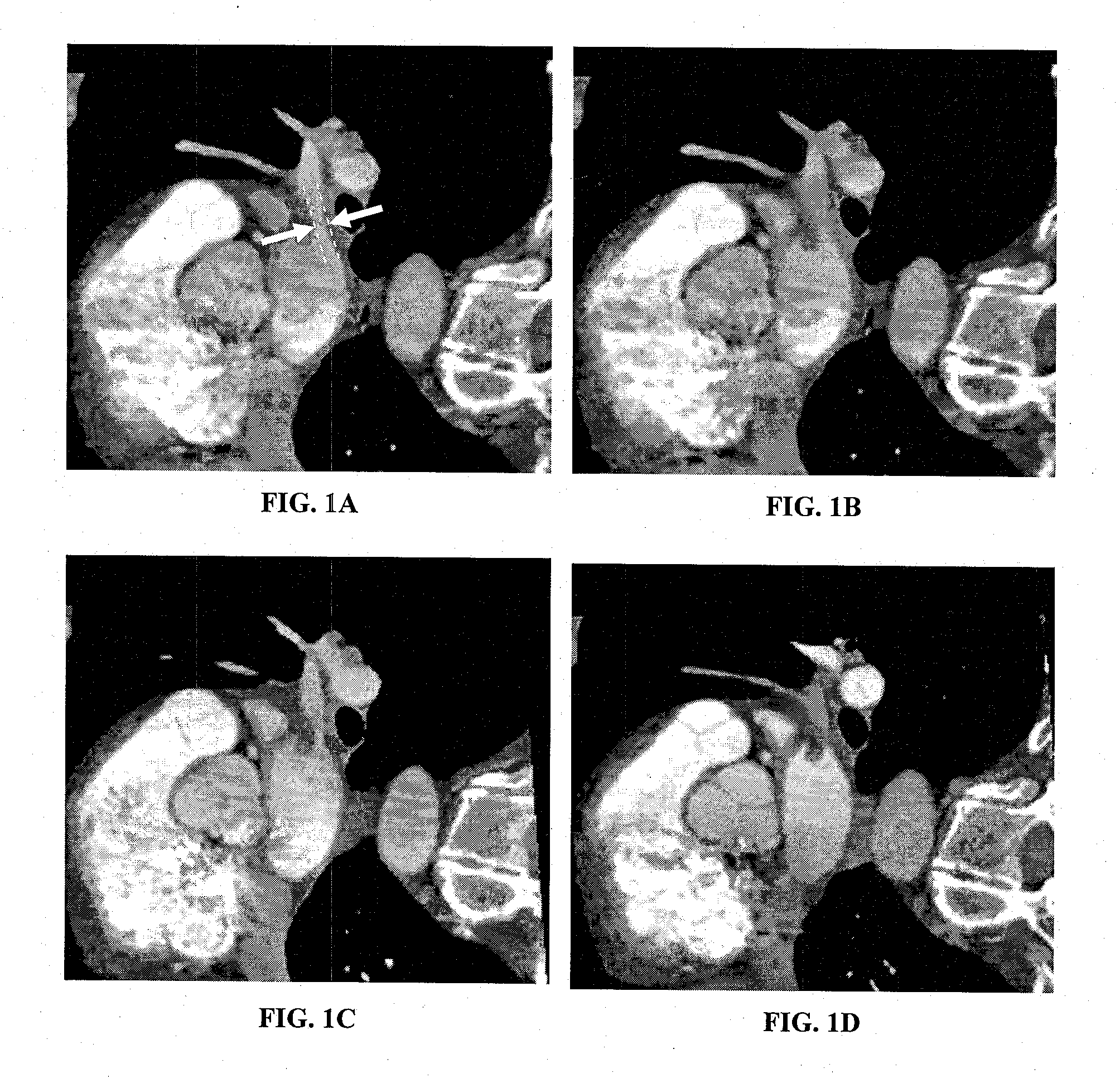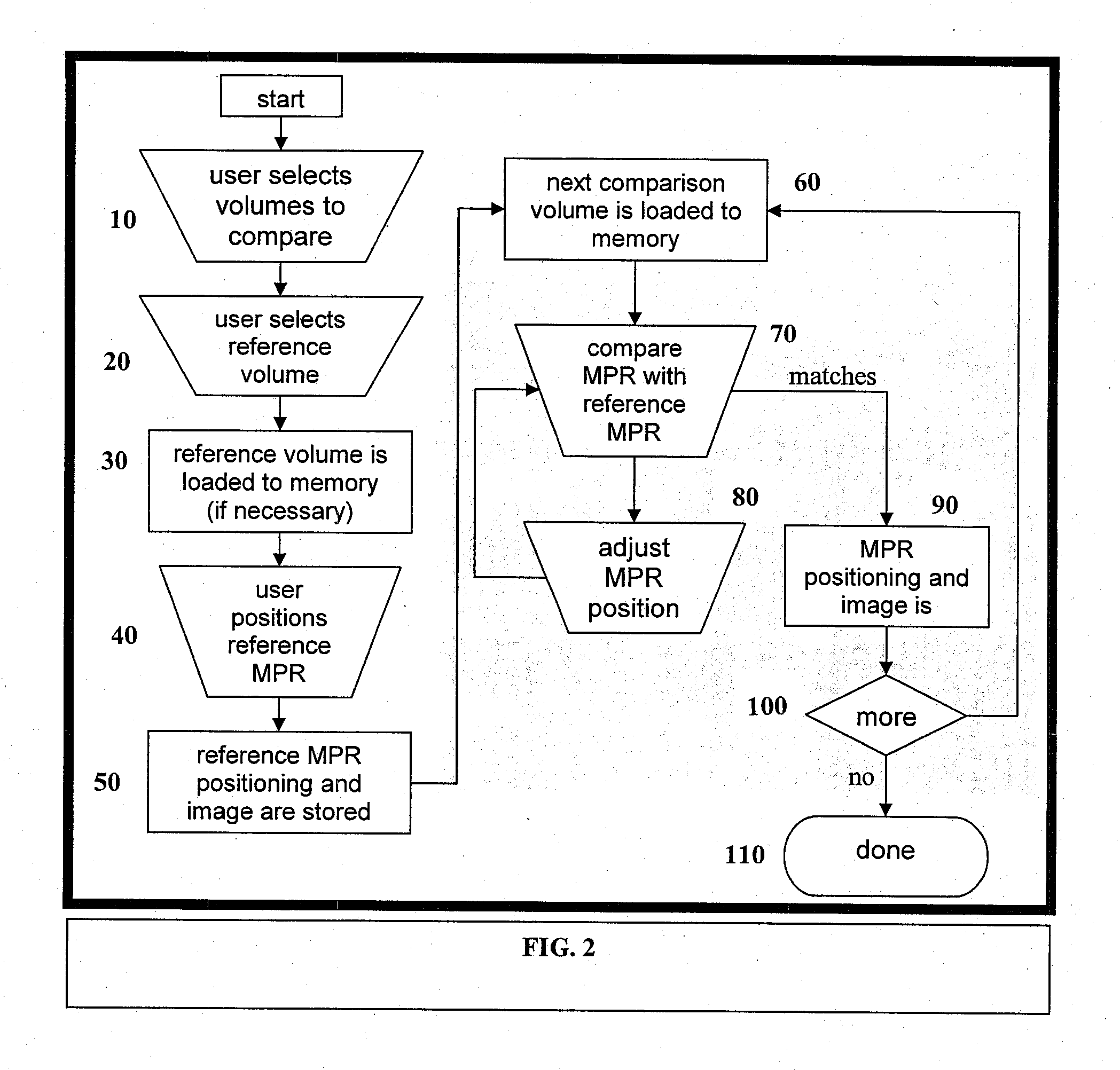Automatic positioning of matching multi-planar image reformatting (MPR) views of multiple 3D medical images
a multi-planar image and positioning technology, applied in the field of automatic positioning of multi-planar image reformatting (mpr) views of multiple 3d medical images, can solve the problems of inability to repeat, inconvenient and time-consuming, and inability to replace manual processes, etc., to achieve quick and efficient positioning
- Summary
- Abstract
- Description
- Claims
- Application Information
AI Technical Summary
Benefits of technology
Problems solved by technology
Method used
Image
Examples
Embodiment Construction
[0015]This section introduces the changes in user workflow when using the inventive system for comparison of MPRs in contrast to the prior manual workflow. Secondly, the system input and output are described. Finally, a specialized algorithm is presented as an exemplary method for implementing the invention.
[0016]Referring to FIGS. 1A-D, an exemplary plurality of successive medical images (MPRs) are shown for use in diagnosing arterial stenosis. FIG. 1A illustrates the pulmonary vein and it's width (diameter) that is being observed for changes due to stenosis. FIG. 1B shows an MPR of a CT scan taken at time T=0. FIGS. 1C and 1D are matching MPRs that were automatically retrieved using the inventive method, and represent images constructed from CT scans taken at time T=three months, and T=six months, respectively. The development of stenosis can be easily identified by the user when comparing these successive MPRs.
[0017]1. Workflow
[0018]Referring to FIG. 2, the fundamental workflow o...
PUM
 Login to View More
Login to View More Abstract
Description
Claims
Application Information
 Login to View More
Login to View More - R&D
- Intellectual Property
- Life Sciences
- Materials
- Tech Scout
- Unparalleled Data Quality
- Higher Quality Content
- 60% Fewer Hallucinations
Browse by: Latest US Patents, China's latest patents, Technical Efficacy Thesaurus, Application Domain, Technology Topic, Popular Technical Reports.
© 2025 PatSnap. All rights reserved.Legal|Privacy policy|Modern Slavery Act Transparency Statement|Sitemap|About US| Contact US: help@patsnap.com



